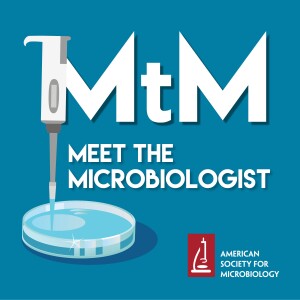
119: Microbiome Diversity and Structural Variation with Ami Bhatt
 2019-10-24
2019-10-24
How do medical professionals incorporate microbiome science into their patient care? Ami Bhatt discusses her research on the diversity within and between human gut microbiomes, and how this research is slowly and carefully being used to build new patient care recommendations.
Subscribe (free) on Apple Podcasts, Google Podcasts, Android, RSS, or by email.
Julie’s Biggest TakeawaysAlthough these terms are often used interchangeably, microbiome and microbiota represent distinct samples types:
Microbiotarepresents all the organisms that live within a community: archaea, bacteria, viruses, and fungi. Microbiomeis the genomes or transcriptomes of these organisms.The gut microbiota may often be referred to as a single entity, but the gastrointestinal tract has many different niches. Alterations in pH, cell type, and the available nutrients provide different selective pressures for the microorganisms that reside in these conditions.
By clustering small proteins based on similarity, Ami’s group was able to identify over 4000 new families of small proteins from existing microbiome datasets. Some of these were found among all microbiome datasets while others were found only in human microbiomes, which provides a clue to their potential housekeeping versus host-microbe-interaction functionality, although the exact functions are still unknown.
Outcomes for non-infectious diseases are affected by the gut microbiome. Ami and her colleagues have worked with transplant patients to understand what type of diversity and which strains play a role in best outcome for cancer therapy patients, such as patients receiving bone marrow transplants. Medical doctors are beginning to incorporate new patient care in light of new microbiome studies.
Understanding the effects of the gut microbiome on human health have helped slowly change patient care in some settings. For example, doctors are reconsidering recommendations for immunocompromised people to stay away from fresh fruits and vegetables, a recommendation previously made due to the potential risk of patients exposure to pathogenic microbes. The benefit of a wide variety of fiber sources, which promote a diverse and robust microbiome, may turn out to outweigh this risk.
Links for This Episode MTM Listener Survey, only takes 3 minutes. Thanks! Ami Bhatt lab website Brewster R. et al. Surveying Gut Microbiome Research in Africans: Toward Improved Diversity and Representation. Trends in Microbiology. Oct 1 2019. Sberro H. et al. Large-Scale Analyses of Human Microbiomes Reveal Thousands of Small, Novel Genes. Cell August 22 2019. Andermann T. et al. The Microbiome and hematopoietic Cell Transplantation: Past, Present, and Future. Biol Blood Marrow Transplant. July 1 2019. Bloomberg: Superbugs Deadlier Than Cancer Put Chemotherapy into Question Clinical Guide to Probiotic Products Available in USA HOM Tidbit: Rous P. A Sarcoma of the Fowl Transmissible by an Agent Separable from the Tumor Cells. Journal of Experimental Medicine. April 1 1911. ASM Article: A Brief History of Cancer VirologyMore Episodes
 2008-09-19
2008-09-19
 2008-09-09
2008-09-09
 2008-08-18
2008-08-18
Create your
podcast in
minutes
- Full-featured podcast site
- Unlimited storage and bandwidth
- Comprehensive podcast stats
- Distribute to Apple Podcasts, Spotify, and more
- Make money with your podcast
It is Free
- Privacy Policy
- Cookie Policy
- Terms of Use
- Consent Preferences
- Copyright © 2015-2024 Podbean.com




